In recent weeks, I featured two new dairy units where the emphasis was on low building cost per cow place. This week, I show a third – an outdoor cubicle unit on the edge of the Atlantic in Clare.
The farmers are PJ and Carmel Murray from Moveen, on the coast road out from Killkee. They have now converted a stand-off pad which they used for 11 years. PJ told me that the cost per cow place was just €504. This was for ground work, concrete, cubicles, feed barriers and scrapers. No additional slurry storage was required.
PJ said that wintering cows outdoors is not the best option for all farmers or all farms, but it has worked well for him. His herd is based on New Zealand Friesian and this makes the cows suited for out-wintering.
He is less sure that the system would suit bigger Holstein cows. He has been crossbreeding in Jersey for the past 15 years.
“At this stage, there’s a percentage of Jersey in every cow,” he said.
PJ also told me that while the location of his farm, only hundreds of metres from the sea, means that he gets plenty of wind and rain, he does not get much cold weather. He is not sure how cows would do out-wintered in colder areas.
PJ was happy with the performance of his outdoor pad in the early years. However, chip became hard to obtain and expensive. “Haulage is a big cost to where we are,” he said.
The pad started to retain water. He thinks that the drainage suffered, possibly due to inferior chip being used or chip being renewed too infrequently.
Typically, where a farmer has a stand-off pad, he has plenty of slurry storage and that was the case here. The Murrays have an open slurry pit from where slurry is pumped to an over-ground store.
The running cost of outdoor cubicles will be somewhat lower than those of a woodchip pad. No chip has to be bought. Slurry costs will be similar. There will be a running cost for scrapers.
PJ has not put stub pillars in place for possible addition of a roof – he will not be doing so. “The unit is big. A roof would cost another €500 per cow place.”
Picture one
The cubicle unit occupies the site of the woodchip pad, but is a bit wider. It measures 40m (132ft) long and 27m (90ft) wide. The unit has 124 cubicles, arranged in two double rows. PJ has 132 cows on the unit at the moment.
He went for a feed rail on both sides. He has eight barrier units (a standard 4.8m (15ft 9in) each) on one side and nine on the other – 17 in all. Allowing eight cows per barrier, that gives him plenty of feed space.
Going by general recommendation of 0.6m per cow, PJ has feed rail space for 136 cows. “I’ve small cows. I’ve seen 10 calved cows eating together at a barrier.”
Picture two
To convert his unit, PJ called in Declan Fennell, a busy farm building contractor who features regularly on these pages.
Declan, from Cooraclare, told me that with no tanks to be installed and no shed pillars, this was a straightforward job.
“I cleaned off down to the clean stone with the excavator. We levelled the site and marked it out for the passages and the cubicle beds.
“We dug and poured foundations for the end walls and crossover walls.”
“We put down boards and poured concrete for the passages to make a slab 5in to 6in deep. We lifted the boards, placed stone filling in the areas where the cubicle beds would go and compacted it. We concreted in pipes for the cubicles, every 10ft.
“We then placed down our side timbers again and poured the concrete slab for the cubicles. The passage slab extends about 6in in under the cubicle bed.”
The ocncrete was supplied by Frawley Readymix.
PJ went for 14ft cubicle beds, giving a 7ft floor to each cubicle. They are spaced at 44in centres. Cubicles and feed rails were purchased from Teemore and fitted by Declan Carey of Quilty, who is PJ’s milking machine technician.
Picture three
The passages are scraped four times per day with these Alfco units. Each run of the 132ft passage takes 17 minutes.
Picture four
Slurry is scraped down to this open slurry pit. The mass concrete walls help minimise the risks associated with an open store. Slurry is pumped from this open store to the Murray’s overground tank.
Picture five
The 1.8m (6ft) high walls at the gable ends of the unit and at the cross over points provide strong anchorage for the cubicle rails. They also provide a degree of shelter, as does the soil bank placed on two sides of the pad.
Picture six
The shuttered wall under the feed barrier will withstand pushing by the front loader, etc. In this picture we can see the cows are staying clean on the new concrete pad.
Cows are spotless
Cubicles, mats and barriers here were fitted by Carey Agri Services of Quilty. The pipes were standing when Declan Carey came on site.
“I bolted the rails on to the standing pipes and then attached the cubicles. The benefit of erecting the cubicles this way is that it’s easy to adjust cubicle width later. You might do that to put a block of heifers together. You just loosen two bolts and slide the cubicles along the rails. When the cubicles are bolted on to a wall there’s no changing them.
The cubicles here are 44in centres which suits the size of cow here. And in this area most farmers make the cubicle beds seven to seven and a half feet long – there are a lot of Jersey cross cows around.”
Declan advised putting the mass concrete wall under the feed barriers rather than timber.
“First, it’s better able to stand up to pushing by the loader and it will be cleaner. But also because this is an outdoor pad, I think timber would become brittle.”
One of the good things about this unit is the good match of feed rail to cubicles, he says – “In many yards the ratio of rail to cubicles is only 75%.”
For any farmer considering an outdoor paid, he recommends having the floor of scraped passages dead level. This is so that liquid won’t run off – in warm weather than would lead to dung drying off and becoming hard to scrape off.
He has been very impressed with how the Murray’s pad is performing.
“The cows are very clean. The mats stay very dry. There’s plenty of wind coming off the sea and I was amazed at how quickly the mats dry off after rain.
“The cows are spotless. And they have a lovely coat of hair.”
This is the third outdoor cubicle pad he has seen built in this area in the past year, he said.










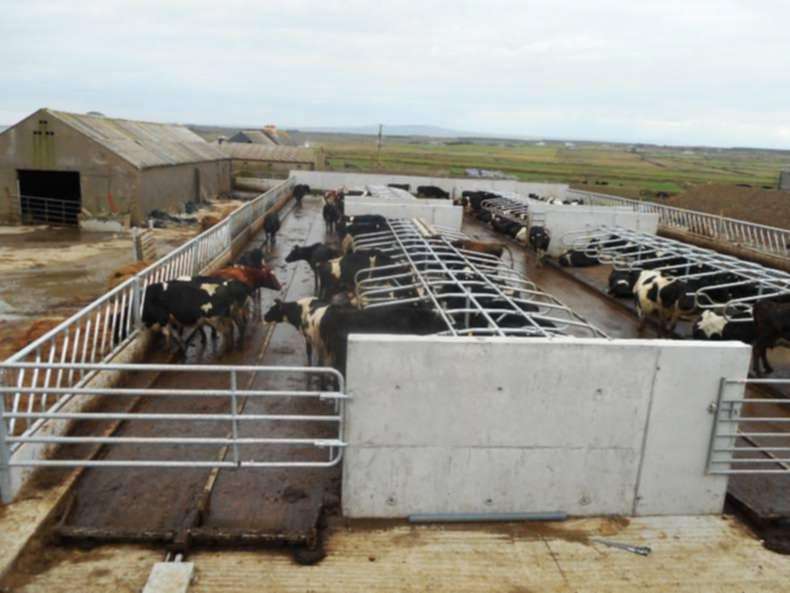
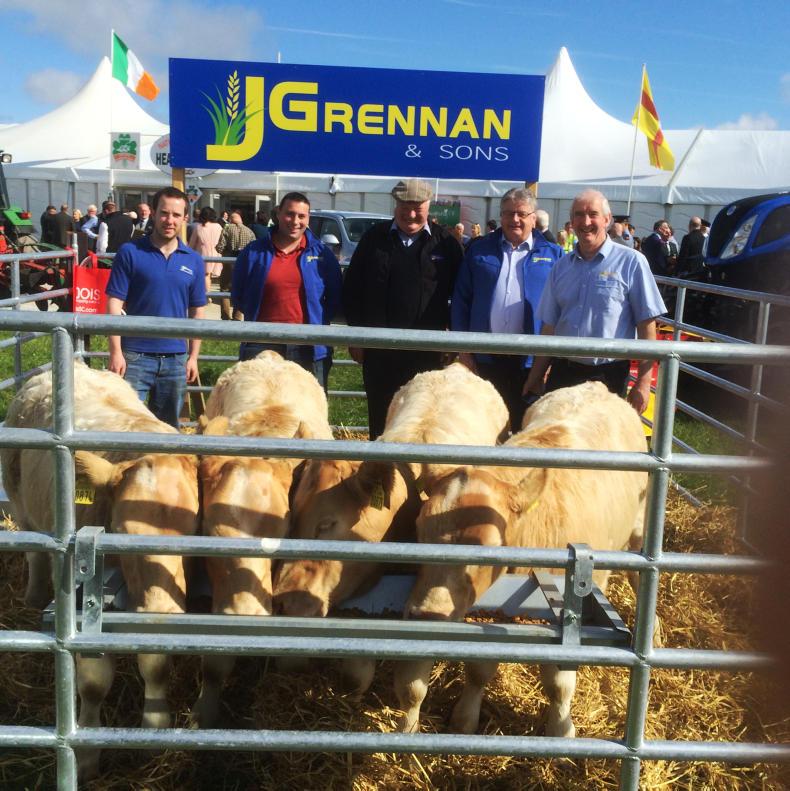
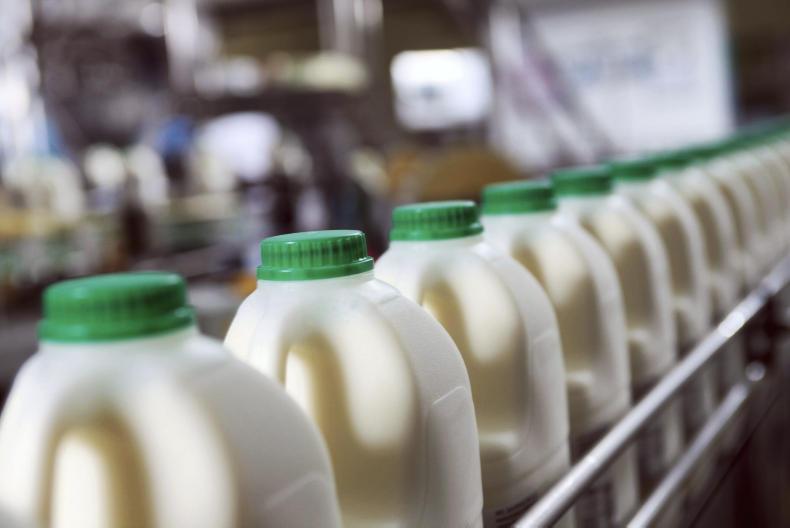
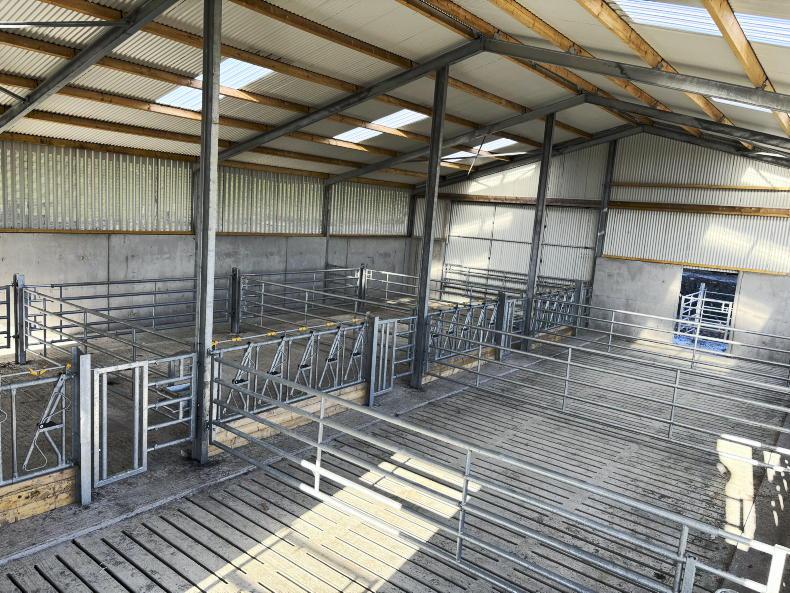
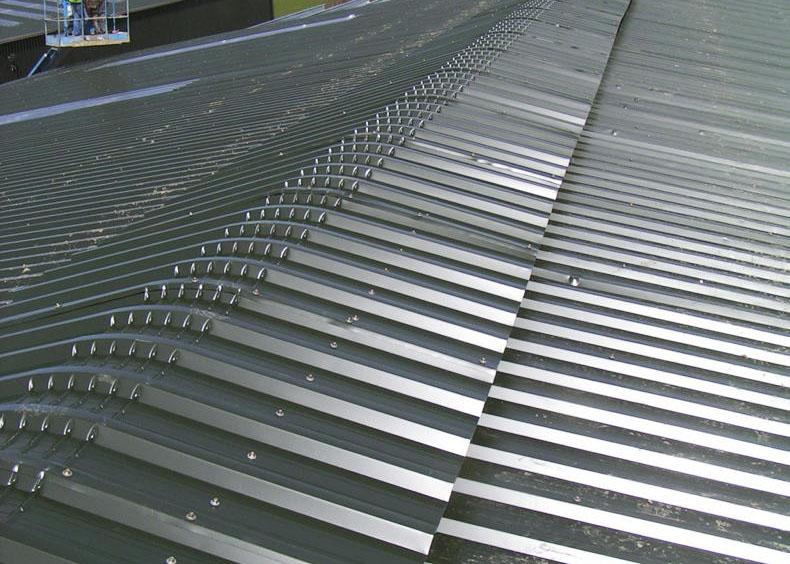
SHARING OPTIONS